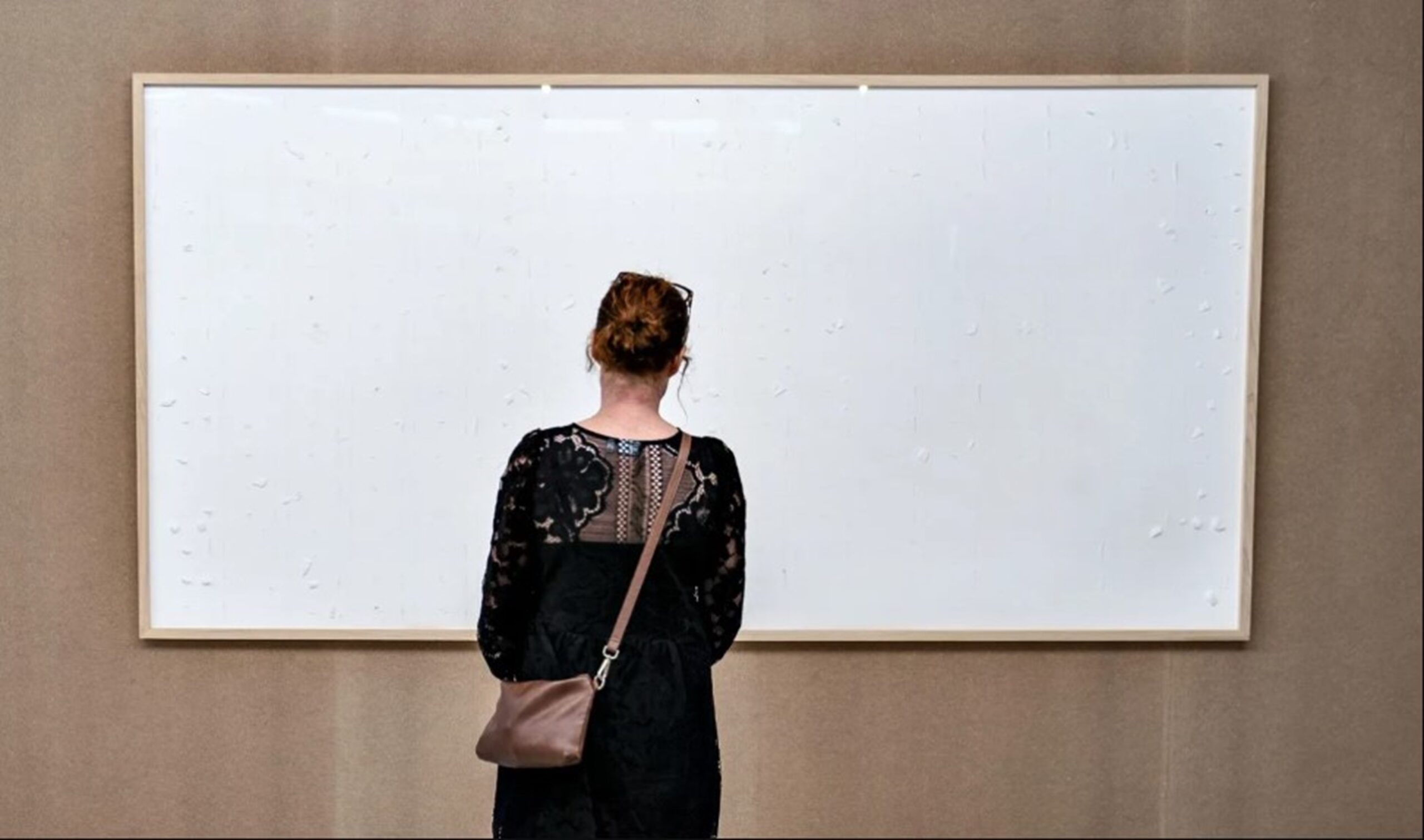Artist Fined $77,000 for Submitting Blank Canvases in ‘Take the Money and Run’ Exhibit

Sept 13, 2024 — Copenhagen, Denmark
Danish Artist Ordered to Repay $76,500 After Submitting Blank Canvases in Audacious Stunt
Jens Haaning, a Danish artist, has been ordered by a Copenhagen court to repay the Kunsten Museum of Modern Art 500,000 Danish kroner (approximately $76,500) following a nearly two-year legal battle. Haaning had originally submitted two blank canvases and absconded with the cash loaned for the artwork’s display, triggering widespread media coverage, including reports by the BBC and NPR.
The pieces were based on two artworks Haaning originally debuted in 2007 and 2010—called *An Average Austrian Annual Income* and *An Average Danish Annual Income*, respectively—which were a comment on the salary of the average Danish and Austrian workers, and contained bank notes totaling those sums.
The Kunsten Museum of Modern Art in Aalborg had commissioned Haaning to recreate these pieces for its “Work It Out” exhibit, which challenged visitors to reflect on their career aspirations. The pieces were supposed to contain a combined 534,000 kroner in cash for a 2021 exhibition.
Initially, Haaning had secured a bank loan to produce his original works. However, for this project, the museum provided the full 534,000 kroner, as reported by The Art Newspaper in 2021.
Upon unveiling, instead of the expected recreations, the museum discovered two blank canvases bearing the collective title: *Take the Money and Run*.
Haaning explained to Danish outlet dr.dk that the new piece aimed to underscore the underpayment of workers, even suggesting that checkout staff should “take from the cash register and run” in a similar vein.
The contract stipulated that the money was to be returned post-exhibition, a term Haaning openly declared he would not comply with. True to his word, he absconded with the funds.
“The work is that I have taken their money,” Haaning declared to dr.dk before the contract’s January 2022 deadline.
He reasoned to dr.dk that recreating the piece as initially planned would have resulted in a personal loss of 25,000 kroner, which fueled his controversial decision.
Museum director Lasse Andersson countered to dr.dk that Haaning had no right to keep the money, noting the contract only allotted a 10,000 kroner artist fee and 6,000 kroner for expenses.
“We are not a wealthy museum,” Andersson previously told the Guardian. “We have to think carefully about how we spend our funds, and we don’t spend more than we can afford.”
Despite this, Haaning claimed that the museum had garnered well over 500,000 kroner from the extensive publicity the piece generated over two years, according to NordTV.
On its website, Kunsten celebrates the contentious submission, stating it serves as “a critique of mechanisms within the art world, but also points to larger structures in our society.”
Andersson acknowledged the humorous aspect of Haaning’s submission, albeit with mixed feelings. “He stirred up my curatorial staff and he also stirred me up a bit, but I also had a laugh because it was really humoristic,” he shared with the BBC.
Ultimately, the Copenhagen court ruled in favor of the museum, albeit deducting Haaning’s fee and the mounting costs from the total claim. This verdict, however, plunged the artist into significant debt.
“It has been good for my work, but it also puts me in an unmanageable situation where I don’t really know what to do,” Haaning expressed to dr.dk.
When approached for further comments, a museum representative did not immediately reply to Fortune’s inquiry.
The incident underscores the often complex and fraught relationship between artist intent and museum curation.
A notable parallel is seen in Banksy’s 2018 incident, *Love Is in the Bin*. Originally sold as *Girl With Balloon* for £1 million at Sotheby’s in London, the piece famously self-destructed the moment it was auctioned. The artwork later reemerged and fetched a staggering £16 million at a subsequent auction.



